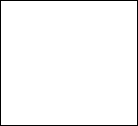Next: Invariant Points of the Up: Proof of Convergence to Previous: Action of the Filter
 |
Let us observe that since the filtered function
![]() is
defined as an average of the function
is
defined as an average of the function ![]() , it can never assume
values which are larger than the maximum of the function it is applied on,
or smaller than its minimum, without regard to the value of the range
, it can never assume
values which are larger than the maximum of the function it is applied on,
or smaller than its minimum, without regard to the value of the range
![]() . Therefore, since the first kernel we start with in the process
of construction of the infinite-order scaled kernel, that is the kernel
. Therefore, since the first kernel we start with in the process
of construction of the infinite-order scaled kernel, that is the kernel
![]() , with
, with ![]() and range
and range ![]() ,
is bound within the interval
,
is bound within the interval
![]() for all values of
for all values of ![]() ,
so is the next one, the kernel
,
so is the next one, the kernel
![]() . We
may now apply the same argument to this second kernel, and conclude that
the third one in the sequence is also bound in the same way, and so on.
It follows that, for all values of
. We
may now apply the same argument to this second kernel, and conclude that
the third one in the sequence is also bound in the same way, and so on.
It follows that, for all values of ![]() , we have
, we have
for all values of ![]() within the periodic interval
within the periodic interval ![]() , and
in particular for all values of
, and
in particular for all values of ![]() within the support interval
within the support interval
![]() . It also follows that, if the
. It also follows that, if the ![]() limit of
the sequence of kernel functions exists, then it is also bound in the same
way.
limit of
the sequence of kernel functions exists, then it is also bound in the same
way.